How Social Enterprises Can Protect Mission and Deliver Profit

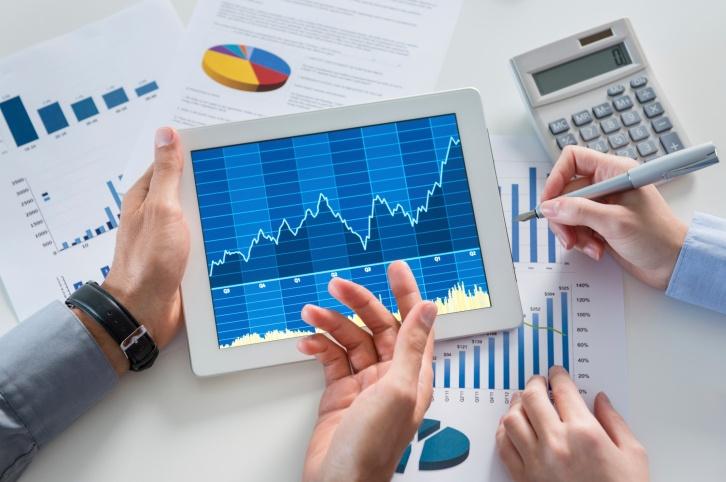
By Marta Maretich
A growing body of sector research is shining light on the principles of how social enterprises can use outcome monitoring to strengthen mission and deliver a blended bottom line.
Up until now, the commitment to measuring and reporting outcomes has been one of the things that distinguished social investing from mainstream investing. Today, that’s changing. Increasing regulation and a global movement for integrated reporting are making impact monitoring everybody’s business, though in different ways and to different degrees. The will to verify is increasing, yet the questions of how and what to measure remain tricky ones for companies, even as measurement standards and services proliferate.
For social enterprises with a double bottom line to account for, outcome monitoring remains even more challenging as well as more important. Proving impact and demonstrating sustainability are key to building brand reputation, attracting investment and winning customers. Beyond these well-known values, evidence now suggests that these activities can actually provide managers and directors with the tools they need to protect the mission while delivering profit.
Two kinds of social enterprise
To understand how this works in practice, the team behind a recent report—researchers Alnoor Ebrahim, Julie Battilana and Johanna Mair—first identify two distinct kinds of social enterprises and then reveal the best monitoring approach for each.
One kind of enterprise, the “differentiated hybrid”, keeps social activities separate from commercial ones. For them, the profits generated through selling products or services are used to pay for activities that help beneficiaries who are not their primary customers.
In a second kind of enterprise, the “integrated hybrid”, beneficiaries and customers are the same people. These businesses create social benefit directly through delivering their products or services. Many microfinance organizations work on this basis, providing loans to beneficiaries who couldn’t otherwise get them.
Facing the danger of mission drift
For both kinds of social enterprises, the report says, mission drift—the failure to realize social and environmental benefit goals—is a danger. But in each case, the threat takes a different form.
For differentiated hybrids, the danger comes from financial pressures leading the company to prioritize creating value for customers at the expense of delivering value to beneficiaries—for example, using increased revenues to grow the business rather than dedicating the money to mission delivery.
For integrated hybrids, risk arises when commercial activity is misaligned or “de-coupled” from social or environmental benefit goals. For example, if delivering the commercial good or service doesn’t reach the intended client group, or it proves too expensive for them to access, then the business has failed in its mission, even if it’s succeeded in the marketplace.
Two different approaches to monitoring
To avert the danger of mission drift, both kinds of social enterprises need to establish systems that deliver information about the effect of their activities—and this is where outcome monitoring comes in.
Differentiated hybrids need to monitor the outcomes of both financial and beneficial streams of activity and use these metrics to evaluate the way commercial activities are supporting beneficial ones. For example: How much profit did the business generate and what was the resulting increase to social or environmental benefit? Monitoring efforts will focus on managers: those heading the social and financial work and those whose job is to integrate the two areas.
Integrated hybrids need, first and foremost, a sound model to begin with, one that makes it possible to deliver benefit through commercial activities. They then need to monitor behavior, the “how” of the way the business is done. For instance: Are sales agents targeting the intended client group? Do the products meet needs or, as in the case of inappropriate lending, do they make the situation of the client group worse? In this case, monitoring needs to cover those overseeing the behavior of salespeople in the field and those delivering services.
A governance challenge
Monitoring is, obviously, a good idea for social enterprises: this research is more proof of that. But the really important insight here is how the monitoring information can be used, and who will use it, to preserve mission delivery.
This report forms part of a growing body of evidence that links outcome monitoring systems and data collection to organizational leadership and governance. With measurement data in hand, directors and managers can see for themselves whether mission is being met or not and take action. Just as importantly, in a climate where businesses are increasingly expected operate transparently, investors and customers will be able to see it, too. This could ultimately prove the strongest incentive for social benefit companies to adopt monitoring systems that help them keep on course.
Download the full report here.
Marta Maretich is a blog editor at Maximpact.com.
WWF publishes roadmap to a more sustainable Europe


A new report from WWF shows that resource efficiency alone could generate over €300bn a year for the EU economy.
Entitled From crisis to opportunity: Five steps to sustainable European economies, the report also shows that the emerging ecological disaster is very likely to dwarf the current economic crisis, in line with key findings from the recent European Environent Agency 2015 State of the Environment report.
Damages from floods have cost more than €150bn over the past 10 years, air pollution costs around €537bn every year and EU industries import every year more than €300bn of raw materials no longer available in Europe.
The report's publication coincides with a meeting in Brussels of the 28 European Economic and Finance Ministers to agree on the new €315bn European Fund for Strategic Investments (EFSI) proposed by President Juncker to boost economic activity and job creation.
Sébastien Godinot, WWF economist and author of the report, said: “Instead of the short-term ”grow dirty and clean up later” flawed narrative, President Juncker and EU leaders should look at the real symptoms of our troubled economies: diminishing natural resources and markets failing to take this into account. It’s simple: no economy can develop without natural resources.”
The report presents a five –step policy roadmap for Europe to build sustainable economies focused on achievable goals in the next five years. Five key enabling frameworks should be integrated to deliver maximum results, WWF maintains: climate and energy, resource efficiency and management, fiscal and financial policies, global sustainable development leadership and an overarching new strategy for Europe from now to 2050.
Picture credit: © Ashestosky | Dreamstime.com
Roundtable on Sustainable Palm Oil Suspends Members

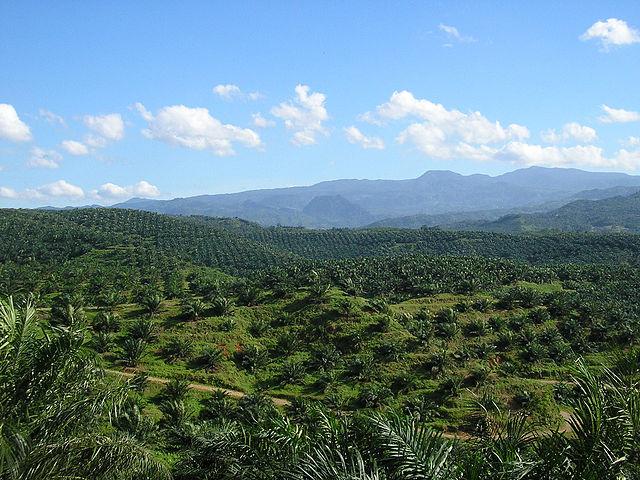
As the medical community ramped up their warnings of health risks related to hydrogenated oils, palm oil production has skyrocketed over the past 15 years.
Palm oil has proven to keep our crackers crisp and peanut butter from separating. But environmental destruction and human rights violations have marred the industry, especially in the two world’s largest producers, Indonesia and Malaysia.
The Roundtable on Sustainable Palm Oil (RSPO) has emerged as the premier self-regulating authority on educating and monitoring industry about the benefits and urgency of sourcing more sustainable palm oil within a firm’s supply chain. Many organizations and writers, however, have criticized the multi-stakeholder group on everything from greenwashing to allowing companies responsible for deforestation to maintain membership within the group.
But advocates for more rigorous sourcing of sustainable palm oil may be encouraged by the RSPO’s decision to terminate or suspend over 100 members for not submitting an annual report to the organization.
Companies that did not submit an Annual Communication of Progress (ACOP) to RSPO for three consecutive years had their membership terminated immediately. Those organizations that failed to report for two consecutive years will have 30 days to comply before their certificates and trademarks are revoked.
Over half of the terminated members are palm oil suppliers, many of which are in important palm oil producing countries including Malaysia, Indonesia, Colombia and the Philippines. Only three consumer packaged goods (CPG) companies in France made the same list.
The list of “suspended” companies is much longer. And on this side of the pond, a few marquee names had their memberships canceled: Hain Celestial Group, the company behind brands like Celestial Seasonings tea, WestSoy, Rice Dream and Alba Botanica; and Seventh Generation, which has been an RSPO member since 2008. Sun Products Corp., which produces laundry cleaning products such as All, Wisk and Snuggle, was also called out by the RSPO. The RSPO acknowledges that some organizations are on the list because they were either bought out or no longer use palm oil in their products — but those are the rare exception.
According to the RSPO, any company on the list will not be able to use the RSPO trademarks on their products until they catch up on their compliance paperwork. True, membership has its privileges in any organization, but it also comes with responsibilities. The pressure is on companies from many environmental and human rights groups to accelerate their sourcing of more responsible palm oil. In fact, the latest commitment to only source sustainable palm oil, from Earth Balance, surprised many observers who assumed the Boulder-based company had already done so.
World Wildlife Fund, which has been working with the RSPO and key companies through its own working group, was supportive of last week’s announcement. “We hope that this is a sign that the RSPO and its membership are now taking seriously not only the need to report progress but also to show progress,” said Adam Harrison, WWF’s lead on palm oil in a press statement. “The duty to continuously improve performance is central to the founding vision of the RSPO and this applies not only to the organization as a whole but more importantly to its individual members.”
Image credit: Achmad Rabin Taim
Based in Fresno, California, Leon Kaye is a business writer and strategic communications specialist. He has also been featured in The Guardian, Clean Technica, Sustainable Brands, Earth911, Inhabitat, Architect Magazine and Wired.com. When he has time, he shares his thoughts on his own site, GreenGoPost.com. Follow him on Twitter and Instagram.
Eiffel Tower Ramps Up Renewables With Wind Turbines


Leave it to the French to turn something as unsexy as a wind turbine into a work of art by installing two of them on the Eiffel Tower.
Yes, that Eiffel Tower, which itself is a monument to creativity and sustainability: When it was built in 1889, it was only intended to last for 20 years. In the ensuing 126 years, the tower has gone through many renovations, but the latest sends a decidedly green message whirling into the future.
Last month, the renewable energy firm Urban Green Energy installed two wind turbines inside the metal scaffolding of the tower. The turbines will produce 10,000 kilowatt-hours of energy, enough to power the tower’s first-floor commercial establishments, which include restaurants, a souvenir shop and exhibits about the history of the tower.
The turbines are part of a plan to reduce the environmental impact of the tower. Société d'Exploitation de la Tour Eiffel (SETE), the organization that runs the tower, is also installing rainwater collection systems, LED lights and solar panels.
Other parts of Paris are also getting into the green makeover act. Later this month, Newsweek reported that a few streets in Paris will get their own camouflaged wind turbines that are shaped like trees.
Here’s a short video of the Eiffel Tower’s wind turbines in action:
https://www.youtube.com/watch?v=HwK4P2Ln0Eg
Jan Gromadzki, an engineer who oversaw the project for the New York-based UGE, says the tower consumes an estimated 6.7 gigawatt-hours of electricity per year, so the wind turbines are “just a small drop in the ocean."
The “installation is definitely more symbolic," Gromadzki says. "But it is still significant because the merchant spaces on the first floor do consume energy, and being able to offset that consumption is something people can really assimilate and understand."
The curved, tri-blade turbines were designed and installed by UGE. The Eiffel Tower posed unique challenges. Each blade had to be hoisted by hand, pulled up to the second floor and secured within the building's tight lattice structure along its southwest corner. The entire installation had to be done at night, because the Eiffel Tower is open to the public until 11 p.m., seven days a week.
SETE wanted "something that would make a visual statement," Gromadzki says, without distracting from the tower's distinct silhouette. So, the blades were painted in a brown-grey hue to match the building, and extra vibration dampeners were added to make sure the turbines wouldn’t disturb diners at the upscale Jules Verne restaurant below. When running at full speed, the turbines only produce about 40 decibels of sound — about the equivalent of a whisper.
"It really does represent this big leap forward for renewable energy as a whole, to have this technology to the point where it can be easily adopted by consumers like the Eiffel Tower," Gromadzki adds. "And I think that was something that, five years ago, no one would've been ready for. It demonstrates that we’ve come this far to create renewable energy technologies that can be easily integrated into the daily lives of people around the world."
Turning wind turbines into visually appealing structures in urban landscapes creatively refutes the traditional criticisms of them, which say they take up too much space, make too much noise and ruin the landscapes in which they are built. Way to go, Paris.
Image: Eiffel Tower, Paris, France | 2 x UGE VisionAIR5 wind turbines via the UGE photo gallery.
Greenpeace: Failing Grade for (Most of) America's Canned Tuna
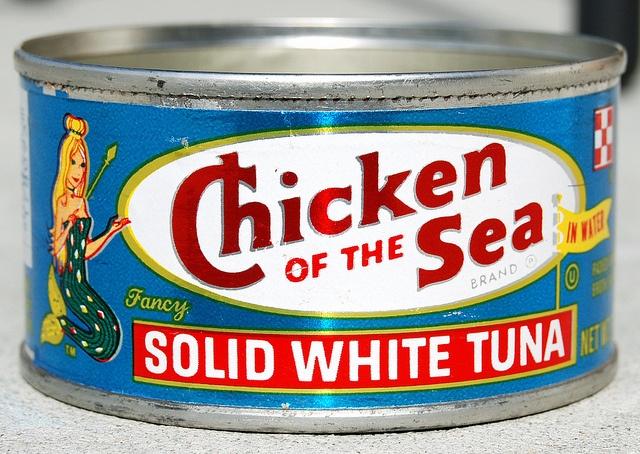

If you are concerned about the impact of the tuna fishing industry on the world's oceans, you now have a guide. Greenpeace released its Canned Tuna Shopping Guide today, which ranks 14 American canned tuna brands.
The environmental organization ranked canned tuna brands for both how their sourcing practices impact oceans and the safety of the workers. The 14 companies were surveyed by Greenpeace and scored on their sourcing policies and practices, including the ability to trace tuna back to its source.
What Greenpeace found while investigating the U.S. canned tuna market is both good and bad news. Some brands have made great progress, and consumers have several better options to choose from. However, about 80 percent of the U.S. market does not offer even one product that is easily identifiable as sustainable.
The top ranked brand is Wild Planet Foods, whose tuna sourcing policy is the most clearly-defined of the 14 brands surveyed. Social responsibility and environmental issues are included in the sourcing policy, and the company is committed to sourcing only sustainably-caught tuna.
Greenwashing can be found among canned tuna companies as well: Bumble Bee ranks No. 12 in the guide, despite that fact that the company claims to be a leader in sustainability. The company states on its website that it takes “pride in leading our industry with the implementation of a corporate initiative aimed at ensuring the world’s canning grade seafood species that we market to consumers are sourced from stocks that are harvested and managed in a manner which ensures continued supply for future generations.”
Clearly, there is room for improvement if Bumble Bee wants to live up to those words. Thai Union recently put in an acquisition bid for Bumble Bee, which will soon become part of the largest tuna company in the world. With its acquisition of Bumble Bee, Thai Union will control about 40 percent of the American canned tuna market. If Thai Union makes efforts to source more sustainably-caught tuna, it could have a big impact in the American market in a good way.
The bottom eight of the companies ranked in the guide all received a failing grade. Unfortunately, most of the tuna in the U.S. is sold under these brands. The bottom three companies (Bumble Bee, Chicken of the Sea and Starkist) represent more than 80 percent of the tuna sold by volume in the U.S. market. That means most of the tuna Americans consume comes from companies that are harming the ocean’s by not sourcing sustainably-caught tuna. And Americans love their canned tuna: The U.S. is the world’s largest market for the product.
Tuna populations have suffered decline, according to Greenpeace, which conducts species assessments. What the assessments have discovered is that most stocks are either overfished or experiencing fishing pressure at an unsustainable rate.
Click here to view the whole list.
Image credit: Roadsidepictures
American Consumers Gobble Healthy Foods at Unprecedented Rate
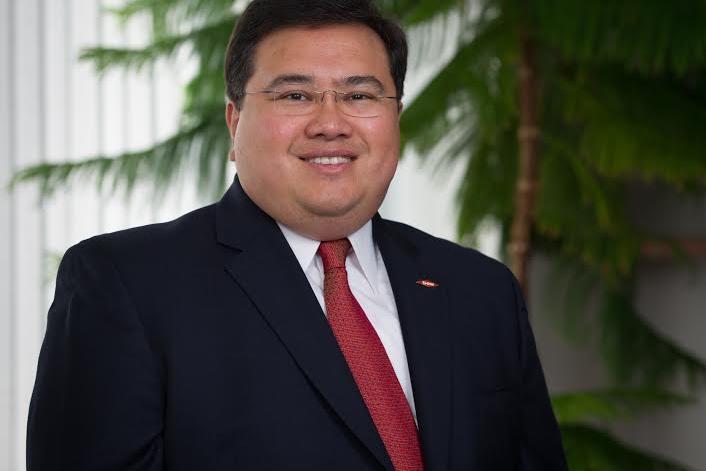

The big news from the 2015 Natural Products Expo West was that the American consumer is buying healthy foods at volumes never seen before. Health and wellness products are achieving three times the sales growth as conventional food products.
A survey conducted by SuperMarket News found that 80 percent of surveyed food-industry wholesalers and retailers had sales growth in health and wellness products. A third of survey respondents reported an astounding 20 percent increase in annual sales!
Gluten- and allergen-free is now top wellness trend
Gluten- and allergen-free has jumped to the top of America’s wellness focus. Sales have grown beyond consumers with Celiac disease that are forced to eat a gluten-free diet. Consumers of gluten- and allergen-free products are now defined as health-conscious consumers searching for natural and organic ingredients. Interestingly, males are more influenced by gluten-free marketing claims than females. People ages 50 to 64, plus those 25 to 34, are most likely to be influenced by gluten-free marketing.
For retailers, the key fact is that 55 percent of gluten-free consumers spend 30 percent or more of their grocery budget on gluten-free foods. These foods typically cost more and carry higher profit margins than conventional food products. This growing consumer segment is challenging the food industry to provide better tasting gluten-free food, lower prices and more selection. In search of a better experience, 57 percent of these consumers have tried 10 or more gluten-free products in the last year.
Consumer confusion defines healthy food marketing
Consumers are plagued with confusions over what to buy and who to buy from. This confusion is being generated by conventional foods’ mass advertising claims, regulatory activity around package labeling and often contradicting health research like the recent removal of dietary cholesterol as a health concern. Consumers are actively using social media and food-assessment smartphone apps to sort through this conflicting messaging in search of foods they can trust.
To win today's food consumers, a food company's messaging must align with these key product attributes:
- Organic
- Non-GMO
- Local
- Simple ingredients
These product attributes, along with gluten- and allergen-free, are hot-button for consumers searching for healthier foods.
Consumers are searching for authenticity
The confusion tied to mixed marketing messaging has consumers looking past the front of the package in search of authenticity and transparency. Increasingly, especially among the millennial generation, consumers are using their smartphones to investigate company and product claims while standing in front of the grocery store shelf. This search for authenticity and trust is driving consumers toward products with simple ingredients: Consumers do not place the same level of trust on products with chemical ingredients as they do for products that have fewer, and all natural, ingredients.
Organic and non-GMO product claims are another area of consumer confusion. By definition an organic food is non-GMO. Consumers still do not make this connection.
The term 'local' is also confusing to both consumers and food sellers. How to define local is the key question. Some consumers define local as food sourced from neighboring counties. Others define it as food from the same state or within a few hundred miles of their homes. What food sellers are now beginning to accept is that the “correct” definition of local is the definition used by their customers.
Activism is succeeding!
One huge surprise reported at the Natural Products Expo West is the success of activism in sparking the sale of non-GMO products. While activism has failed to win GMO labeling legislation, it has succeeded in growing consumer awareness around the issue.
Conventional food companies, like Dupont, Monsanto, Coca-Cola, General Mills, Hershey, Nestel and Kellogg, that have poured millions of dollars into campaigns to successfully fight state initiatives on GMO labeling are winning the battle but losing the war. Media reporting on both GMO labeling initiatives and the efforts by conventional food companies has raised consumer awareness to levels that has sparked consumer buying of non-GMO products.
Rapid consumer self-education reshaping food industry
At last year’s Natural Products Expo West, the key marketing buzzwords were “Healthy Convenience Food.” What a difference a year makes in terms of how quickly consumers are educating themselves on sustainable and healthy food practices. In 2015 the American consumer now associates the word “convenience” with food preservatives.
This accelerating consumer awareness is placing tremendous pressure on food retailers to keep pace. Grocery stores are re-allocating their food merchandising mix toward healthier foods, manufacturers are redesigning their foods to remove preservative chemicals, and retail stores are increasing their refrigeration displays as a storage alternative to food preservatives. But the pace of change is not keeping up with the growing demand by the health-conscious American consumers.
The bottom line for the American food industry is that the American consumer is in revolt. They are using their smartphones and social media to figure out who is telling them the truth. They are using their buying power to demand sustainably-sourced and healthier food. The use of marketing power and political campaign contributions by conventional food corporations are, at best, slowing the inevitable. Americans want to eat healthy food, produced sustainably and sourced from trustworthy businesses. And they want it now!
Image credit: Bill Roth
Bill Roth is an economist and the Founder of Earth 2017. He coaches business owners and leaders on proven best practices in pricing, marketing and operations that make money and create a positive difference. His book, The Secret Green Sauce, profiles business case studies of pioneering best practices that are proven to win customers and grow product revenues. Follow him on Twitter: @earth2017
Crime Surges in North Dakota’s Oil Country

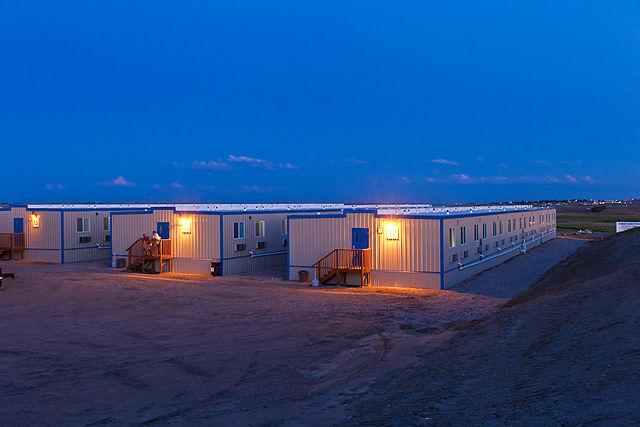
And you thought J.R. Ewing from the fictional prime-time soap "Dallas" was a tough cookie and an indictment of the oil industry.
It was not that long ago that North Dakota was so far off the radar that some powers-that-be were mulling chopping “North” off the state’s name to give the Peace Garden State an image makeover. Not that the state really needed it: The Badlands, spectacular outdoor scenery, rich art deco architecture and cool towns such as Bismarck, Jamestown and Fargo, make North Dakota well worth a visit. The state was also never really poor. Commodity crops, outsourced business services and some banking kept the economy steady. But then oil was discovered in the state’s Bakken region, and the biggest American oil rush since the west Texas boom kicked in.
Along with quick riches, skyrocketing real estate and environmental degradation, many towns in North Dakota began to experience a rapid increase in crime. Local police forces have become so overwhelmed that the FBI has now become involved.
The thought of asking the feds to beef up their presence in North Dakota, with its population of less than 750,000, seems odd considering the red state’s politics and general distrust of D.C. But even as cities and towns increase the size of their police forces exponentially, the uptick in crime has become too much for local law enforcement to handle.
As the Associated Press reported last month, the oil and fracking boom has rapidly transformed small and tranquil towns into bawdy and crowded centers of overpriced apartments, bars and nightclubs. Most newcomers, of course, are only interested in minding their own business while working at the oil patch jobs that pay over $100,000 a year. But with that boom and cash comes a bevy of social ills, the intensity of which local police officers struggle to manage. And, as in the case of many oil-producing regions, copious amounts of discretionary income and boredom cause temptation to beckon at just about every corner.
As one local police chief described to the press, an area that rarely saw out-of-state license plates had a sighting of a car registered in the state of Sinaloa, Mexico. Crime involving sex trafficking and drugs make the barroom brawls seem easy to confront — except those, too, are increasing with frequency. While crime has long been on the decline in much of the United States, the surge in violent and property crimes, which read like police blotters from the 1970s and 1980s, have led many locals to look over their shoulder and think twice before leaving at night. And yes, arrests of suspects who could have ties to Sinaloa drug hotels have occurred. Citizens in towns like Minot are putting up Facebook pages that are monitoring crime, and they have sizable memberships.
The oil industry is despised by many, and is often portrayed as the villain in both popular culture and everyday life; but until more viable and sustainable alternatives can scale, for now it is the foundation of countless raw materials, chemicals and, of course, energy. But the drastic changes in North Dakota demonstrate that while for many oil has been a blessing, for many others, it has also become a curse.
Image credit: Target Logistics
Based in Fresno, California, Leon Kaye is a business writer and strategic communications specialist. He has also been featured in The Guardian, Clean Technica, Sustainable Brands, Earth911, Inhabitat, Architect Magazine and Wired.com. When he has time, he shares his thoughts on his own site, GreenGoPost.com. Follow him on Twitter and Instagram
Designer Handbags Provide Jobs, Preserve Ancient Cultures

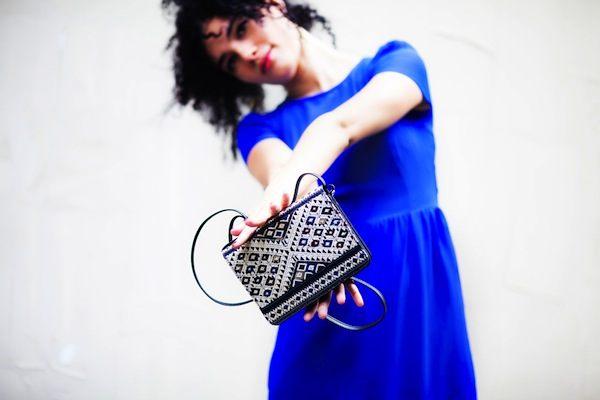
The term “sustainable fashion” has many meanings: It can refer to clothes and accessories made from organic, naturally-dyed fabrics; apparel made by workers who receive a living wage; or high-quality garments made to last for decades to come.
But for tote and handbag maker Wild Tussah, sustainability means more than providing a fair income for the artisans that make each bag by hand; it’s about preserving the long-standing but disappearing tradition of weaving in Vietnam.
Wild Tussah’s line of premium leather tote bags, priced at $160 each, feature colorful weaves made by the Cham people, one of Vietnam’s ethnic minorities whose language is on the verge of extinction. The company has also just launched a line of black leather day-to-night handbags, which showcase a rare weave that the Lu ethnic community uses for traditional women’s skirts. These weaves can only be produced by highly skilled weavers and can take three to six months to create. True to its name, the $130 handbag can be used with its straps and worn over the shoulder during the day, and at night, the straps can be removed to create the perfect evening clutch.
Because the weaves on each bag are handcrafted, the company notes on its website that there will be some variance in textile designs and colors among bags. This means each bag is truly unique – and what’s more fashionable than owning a piece no one else has?
Danica Ratte, Wild Tussah’s founder and sustainable fashion designer, came up with the idea to incorporate ancient Vietnamese weaving techniques into handbags and totes while she was traveling through and eventually settling in Southeast Asia. She met weavers in the villages she visited and was troubled to hear that their venerable art was not being passed on to younger generations because it was no longer profitable.
“… I learned that fewer girls were being taught at an early age how to use a loom because of modernization and reduced demand for traditional weaves,” Ratte said in a statement. “Some of the women were forced to choose different occupations altogether, so that they could provide for their families, even though they really wanted to continue weaving instead.”
So, Ratte created Wild Tussah – “tussah” is a kind of silk produced from wild Asian silkworms – to provide jobs for local weavers, support the weavers’ families and help protect an ancient art form.
The company recognizes it is just a start to a complex problem. Approximately 49 percent of Vietnam’s ethnic minorities live in poverty, according to a 2013 report from a Vietnamese research institute. And over 6 million people from Vietnam’s ethnic communities lack education and decent living conditions.
In addition to providing jobs and good working conditions to Vietnamese weavers, Wild Tussah’s collection of totes and handbags also boasts other sustainable features: The high-quality bags are designed to outlast disposable accessories from the fast fashion trend, and to reduce waste, artisans save leftover weave scraps to reuse in future designs.
As for its future plans, Wild Tussah hopes to source weaves from other parts of Southeast Asia and expand into South America, the company says on its website. The bag maker may also pursue Fair Trade certification for its products in the coming years; right now, it is devoting its money and resources to developing its collection and supporting its artisans, the company says, rather than paying for the third-party validation process that can be expensive for a small company.
By creating fetching handbags and totes that make a dying weaving tradition profitable, Wild Tussah has found another way to make the fashion industry sustainable.
“When you buy a bag from us, you are sustaining a culture from thousands of years ago and showing that you deserve more from your brands,” Ratte said.
Image credit: Wild Tussah
Passionate about both writing and sustainability, Alexis Petru is freelance journalist and communications consultant based in the San Francisco Bay Area whose work has appeared on Earth911, Huffington Post and Patch.com. Prior to working as a writer, she coordinated environmental programs for Bay Area cities and counties. Connect with Alexis on Twitter at @alexispetru
Place Your Bets: SunEdison Buys Solar Energy Storage Startup

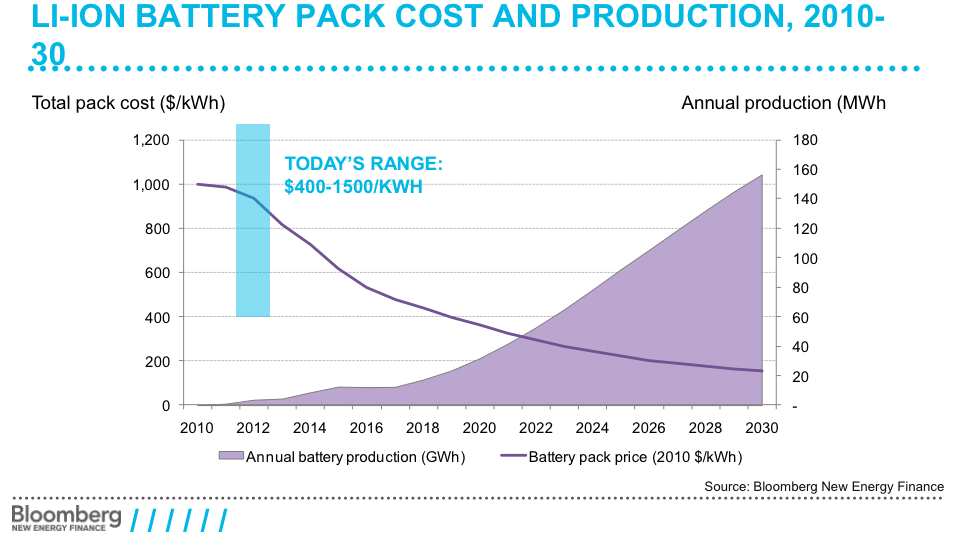
SunEdison on March 5 announced it is acquiring distributed solar energy storage systems provider Solar Grid Storage LLC, making it “the first renewable energy company to offer solar, wind and energy storage.” Investments being made by venture capital (VC) funds, including those backed by the likes of GE and Total, highlight growing corporate and investor interest in stationary energy storage as a new, up-and-coming segment of the renewable energy and smart grid market spaces.
In related news, Tesla Motors made headlines once again this past week as it readies the launch of stationary energy storage solutions for use in homes and businesses, and ultimately, on utility electric grids. Tesla's stationary energy storage solutions will make use of the lithium-ion (Li-ion) batteries expected to roll off production lines at its Gigafactory, a battery plant the automaker is building near Reno, Nevada.
Through its VC unit, France's multinational integrated oil-and-gas company, Total, is also putting an increasing amount of capital into innovative startups that have developed stationary energy storage solutions. “Quietly, Total is building a renewable energy powerhouse right under our noses,” Motely Fool's Travis Holum wrote in a March 3 post.
Stationary storage: The key to opening the doors to a renewable economy?
In addition to owning two-thirds of market-leading U.S. solar PV manufacturer and project developer SunPower, Total has an equity stake in Sunverge, which is working with SunPower to develop energy storage solutions. Total has also invested in Millbrae, California-based Stem, whose sophisticated energy storage network platform is said to be capable of managing heterogeneous fleets of geographically dispersed energy storage assets installed at utility customer sites.
A new generation of distributed battery and other energy storage solutions is providing the key “missing ingredient” needed to build distributed, local microgrids fueled by solar, wind and other renewable energy generation sources. Further up in scale, “intelligent” energy storage systems are being tested in the field by grid operators and utilities in California, Hawaii, New York and other U.S. states.
Utilities traditionally rely on fossil fuel-fired generation capacity to assure a steady flow of electrical energy across grids, as well as sources of power in emergencies. But grid operators, regulators and utilities have increasingly come to see advanced energy storage as a more effective, more efficient and more environmentally friendly alternative.
According to a June 14 market forecast from Bloomberg New Energy Finance, annual global investment in stationary grid energy storage will rise to reach $5.1 billion come 2020, over 17 times that for 2013.
*Image credits: 1) SunEdison; 2) Solar Grid LLC; 3) Bloomberg New Energy Finance
5 Companies Doing Corporate Philanthropy Right

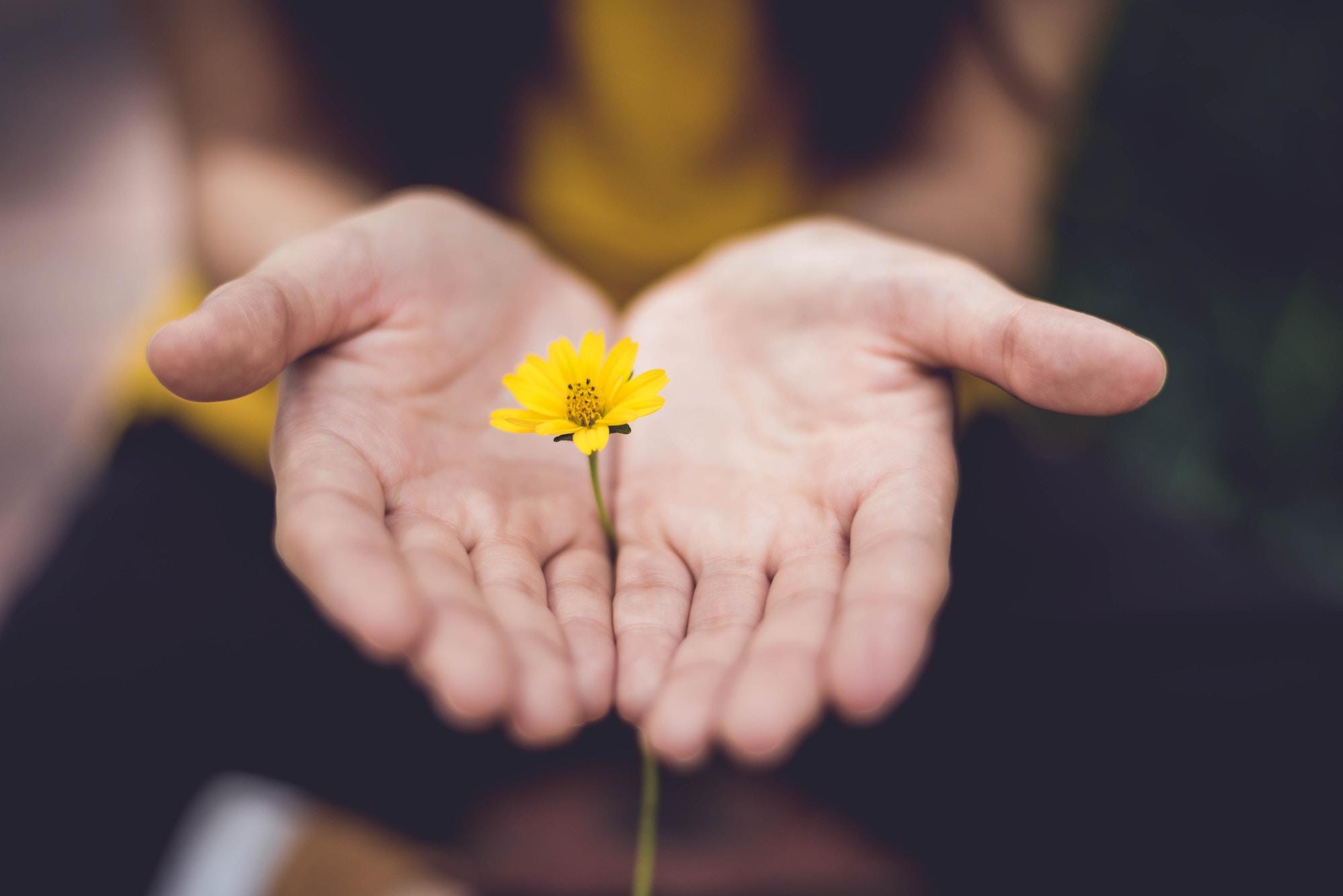
By Adam Weinger
Some companies just get it. They understand that nonprofits are out there fighting to make the world a better place, so they institute corporate giving programs that provide more funds, in more ways, to more organizations.
Two popular ways that companies donate to nonprofits are:
- Matching gift programs – Corporations match employee donations to eligible nonprofits, thus doubling or tripling donations.
- Volunteer grant programs – Businesses award money to nonprofits in exchange for employee efforts at those nonprofits.
Like Tom Brady with a football, some companies make corporate giving look easy, and they accomplish great feats as if doing so is simply in their nature. Below are five companies that deserve an MVP trophy for corporate philanthropy.
1. Apple
CEO Tim Cook became Apple’s head honcho in April 2011 and almost immediately instituted a program to match employee donations. In the time since, Apple has matched over $25 million worth of employee donations, resulting in more than $50 million for charities around the world.
In October 2014, Apple informed employees that it will expand its corporate giving program to include all countries in which it has a presence, which extends the program from U.S.-based nonprofits and a handful of organizations in other nations. Apple also announced that its volunteer grant program will give employees $25 per hour for their respective organizations.
Silicon Valley companies have been criticized for a lack of corporate philanthropy, although companies may just differ in how they donate. While Tim Cook is adamant about employees dictating where Apple donates, Facebook CEO Mark Zuckerberg separates his business from his philanthropy. He and his wife gave $120 million to help local schools in 2014, which demonstrates his propensity to acquire wealth and share it personally rather than to donate through corporate giving.
Apple will match employee donations up to $10,000 per year, and most 501(c)(3) organizations or equivalent organizations are eligible to receive matching gifts.
2. Google
Normal companies don’t offer diverse giving options, but Google is not a normal company. With offices in 70 cities and more than 40 countries, Google’s philanthropy has a deep global reach from New York, to the U.K., to Germany and more.
Google could not give as much as it does without enthusiastic, benevolent employees. Last year, more than 6,500 Google employees volunteered nearly 80,000 hours of service. In total, Google has matched $21 million in employee donations to over 9,000 organizations worldwide.
Google’s community programs include:
- Bay Area Giving: Proud to support local nonprofits that strengthen the community, Google has given over $60 million to Bay Area nonprofits over the past three years.
- Code for America: In an effort to provide better technological support for governments that are slow to embrace technology, Google provides Code for America with an annual gift of $3 million to develop civic technological solutions.
- Roberta: Google believes that robots are a fun, effective way to teach children foundational technological concepts, so they funded Germany’s Fraunhofer Institute for Intelligent Analysis and Information Systems to help them develop technology to program and control robots using a smartphone app.
- Programming Education Gathering: Google donated more than 5,000 Raspberry Pi computers in order to provide a computer science education to more than 25,000 Japanese children.
- Raspberry Pi: A $1 million Google grant will give Raspberry Pi computers -- inexpensive microcomputers about the size of a credit card -- to 15,000 U.K. children who show exceptional enthusiasm for computer science.
3. Microsoft
In 1983, 200 Microsoft employees raised $17,000 for nonprofits through the company’s first employee giving program. Thanks to matching gifts, Microsoft employees have since donated over $1 billion to charitable organizations. That’s a lot of computers.
But maybe it’s not a lot of computers, because Microsoft saves nonprofits from having to spend too much on technology through product donations. In 2014, over 86,000 organizations in more than 125 countries received technology donations. The gifts ranged from computers to software to refurbished hardware in an effort to affordably bring nonprofits into the 21st century.
Microsoft also offers a volunteer match program, which began in 2005. Nonprofits receive $25 per hour when Microsoft employees volunteer for at least four hours.
For regular matching gifts, Microsoft employees may submit matching gift requests for donations up to $15,000 per year, which is one reason Microsoft is consistently included in the listing of top matching gift programs.
4. PepsiCo
Pepsi is a food and beverage powerhouse, which is why its philanthropy prioritizes related causes, including:
- Healthy lifestyles
- Affordable nutrition
- Access to clean water
- Sustainable agriculture
- Job readiness
- Empowering women
Pepsi offers to match gifts up to $10,000 per year per employer, and it matches at a 2:1 ratio if the employee volunteers more than 50 hours with a single organization. Otherwise, Pepsi matches 1:1.
Pepsi employees strive to improve communities through a number of programs including:
- PepsiCorps: This skill-based volunteer program places Pepsi employees in communities from Ghana, to India, to New Mexico, to aid with projects that relate to Pepsi’s corporate giving initiatives.
- Mother Water Cellar Project in Greater China Region: Pepsi volunteers helped to construct a water purification tower for the benefit of over 700 students and teachers at a school in southwest China.
- Food for Good: Started by employees in 2009, Food for Good has served over 1.6 million free, nutritious meals to inner-city children.
Pepsi also prides itself on strategic grants, through which it donates about $25 million per year. The company loves to support water sanitation efforts, and tends to give large gifts to organizations that are established enough to deliver potable water to millions of people.
5. Shell
Like Pepsi, Shell also supports the community in a big way.
Through a long-standing philanthropic relationship, Shell has donated more than $24.8 million dollars to the University of Texas at Austin. In 2012, Shell and UT signed a five-year, $7.5 million deal to address challenges facing the growing worldwide oil and gas industry. Most of the money will go to research, but nearly half a million dollars will support UT students and programs.
To empower employees, Shell offers a matching gift program. The company matches employee donations between $25 and $5,500 at a 1:1 ratio.
Matching gifts have helped Shell to pursue several philanthropic goals. As of the end of 2014, Shell donations have helped to create more than 35,000 jobs, saved 6.2 million metric tons of CO2, and raised $5 billion for organizations in four continents.
--
In 2013, more than $335 billion worth of charitable donations were given to nonprofits, and 15 percent of that came from company foundations. Giving by foundations also increased by 5.7 percent from the previous year. When it comes to charitable giving, corporations matter, and the funds they give are a significant portion of the giving pie. Whether it’s through matching gifts, volunteer grants or related charitable initiatives, it’s good to see that some of the world’s largest companies believe in philanthropy and lead by example.
The five above companies are some of the most successful companies in the world. And charitable giving as a core value benefits their bottom line in more ways than just community appreciation.
We hope that employees and companies continue to give back to nonprofits to not only better their local communities, but also improve their business results.
Adam Weinger is the President of Double the Donation, the leading provider of matching gift tools and services to nonprofits. You can connect with Double the Donation on Twitter, LinkedIn, or personally contact Adam.
Image credit: Unsplash